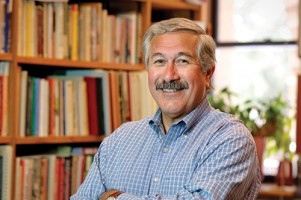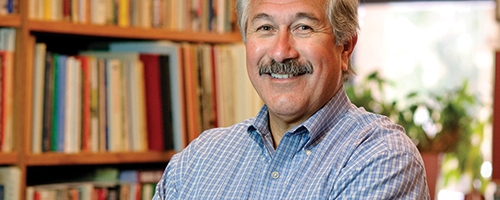Dr. Albert Camarillo, president of the Organization of American Historians, is giving a lecture tonight at Portland State on racial segregation. His lecture, titled “Segregated Life in U.S. Cities—An Era of Racial Borderlands,” is especially relevant to the demographics of Portland.
Racial segregation in modern America
Dr. Albert Camarillo, president of the Organization of American Historians, is giving a lecture tonight at Portland State on racial segregation. His lecture, titled “Segregated Life in U.S. Cities—An Era of Racial Borderlands,” is especially relevant to the demographics of Portland.

COURTESY OF Stanford Department of History
Historian and author Albert Camarillo examines how “racial borderlands” persist in the U.S.
While racial segregation may not be the first topic of interest to many college students, this event is valuable because it illuminates the tensions that exist throughout the country and the Pacific Northwest.
“I think racial segregation is a really present issue,” Melissa Iglesias, the recruitment coordinator for the student group Las Mujeres, said. “A lot of people have the common notion that racism doesn’t exist and that we’re over that and it’s not as prevalent as it used to be, but it’s present in school and colleges and all types of situations.”
Camarillo studied segregation at Stanford University and collected numerous awards for his teaching and research. Camarillo is renowned for being able to clearly present large-scale issues of trends that are helping to reshape communities. Camarillo has done many studies on urban environments, both in his native California and in Pacific Northwest communities such as Portland.
Portland is certainly no stranger to discussions of racial segregation, as anybody who has had a deep discussion of gentrification in the Pearl District or Northeast Portland’s Alberta Street will tell you.
Iglesias experienced segregation when she attended a high school in which most of the students were European-American.
“A lot of times, people would make comments about race and Latinos…I felt really isolated,” Iglesias said. There was a “big lack of cultural training and it correlated to the academic achievement of minority students…that’s where segregation comes in.”
PSU has recently made larger commitments to addressing the needs of this changing demographic by working toward more inclusion of Latinos and other minority populations on campus. This year the university plans to hire two more professors whose focus will be on Latino studies, as well as a new editor for the Pacific Historical Review, a leading scholarly journal in Latino studies since the 1970s.
“Professor Camarillo’s lecture speaks directly to PSU’s commitment to inclusion, community engagement and advancing our understanding of social change, locally and nationally,” Dr. David Johnson, a PSU history professor who helped organized the event, said. “American cities—not least, Portland—are undergoing long term shifts in their demographic and in particular ethnic makeup, and these are often difficult to understand.”
“[Portland] has been [segregated] since its inception; it will be interesting to see what [Camarillo] has to say about the movement of different groups in the city,” Diego Ponce, a senior and University Studies peer mentor working with Johnson, said.
The importance of cities is vital to Ponce.
“I live in the city,” Ponce said. “Cities are where a lot of different cultures come together and have to find ways of interacting either by segregation or cross-cultural interaction.”
Segregated Life in U.S. Cities—An Era of Racial Borderlands
Thursday, Nov. 1, 5:30 p.m.
Lincoln Hall, room 75
Free and open to the public
Even for those who are not aware of Portland’s deep history of discrimination, this lecture is sure to generate discussions of Portland’s past, as well as where it may be headed in the future.
“Lectures can be spaces to build conversations that will circulate in our classes, the rest of our PSU campus and beyond,” Dr. Patricia Schechter, PSU history professor, said. “[It’s] a chance to build a bit of community and to connect in fresh ways.”
What can an attendee hope to gain from the lecture?
“Students and others in the audience will gain a deeper appreciation of the dynamic rather than fixed makeup of the American people—where they live, their ancestry, race and ethnic identification, and, in general, their common and divergent traits, interests and aspirations,” Johnson said.
Camarillo’s lecture tour coincides with the release of his upcoming book, Mexican Americans and the Changing Landscapes of Cities: The Urban Borderhoods of America, to be published by Oxford University Press in spring 2013.




